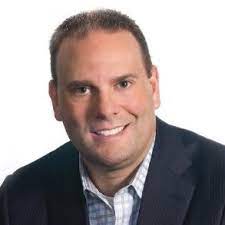| Last updated on October 23, 2023
Healthcare providers are expected to be there when we need them most, but burnout in healthcare is now at critical levels, threatening access to timely, safe and compassionate care.
The healthcare system is overburdened, experiencing heightened levels of demand while healthcare providers are exiting at unprecedented levels - even mid-shift.
Patients have begun to feel the fallout and many health systems are increasingly worried about the future of healthcare as millions are expected to leave the profession over the next few years.
Burnout and turnover are at crisis levels. It’s time to move from raising the alarm to building a pathway forward that strengthens and protects our health systems and those who work within them.
In this article explore:
- What is healthcare provider burnout?
- What pressures have contributed to a burnout crisis?
- What are the consequences of healthcare provider burnout?
- What needs to be done to restore and rebuild provider capacity?
Key takeaways:
- Healthcare provider burnout and resignation have reached a record high, affecting patient care, hospital efficiency and the future of healthcare
- Beyond unmanned hospital beds, medical burnout and mass turnover is pressuring leaders to rethink the structure of healthcare, including how its delivered
- Investing in technology can standardize and strengthen care while reducing the number of tasks healthcare providers need to perform each day, improving patient outcomes
What is healthcare provider burnout?
According to Cleveland Clinic, burnout is a state of being where even simple tasks become overwhelming to complete as a crippling level of physical, emotional or mental exhaustion takes hold.
According to Johns Hopkins Medicine, healthcare provider burnout presents with these symptoms:
- Decrease in enthusiasm for work
- Loss of engagement in work
- Cynicism about the work
- Low sense of accomplishment
There is a thin line between experiencing burnout and facing mental health challenges such as increased depression, anxiety, impaired memory, insomnia, and addictions.
Burnout is also a top reason cited for resignation. It’s been noted as a major contributing factor leading to the “Great Resignation” - a mass exodus of over 4 million Americans who left their jobs in early 2021, and a trend that continues today with abnormally high resignations still occurring.
What pressures have built a burnout crisis?
Healthcare has long been a profession where burnout is prevalent and this has been exacerbated by the pandemic.
Since the COVID-19 pandemic, healthcare systems around the world have experienced increased demands while grappling with a decrease of resources, including staffing shortages due to sickness and high healthcare turnover rates.

According to the New England Journal of Medicine, burnout of healthcare providers has been on the rise since the beginning of the COVID-19 pandemic.
Over the course of the pandemic, healthcare providers have:
- Continued to work despite mass shut-downs of other industries
- Caught (and in some cases have died from) COVID-19
- Been threatened with anger, violence and threats due to the spread of misinformation about the pandemic
- Experienced trauma after witnessing distressing patient outcomes while working on the frontline
- Dealt with increasing exhaustion and stress in their workplaces, leading to insomnia, depression, and other mental health struggles
These building stressors occurring alongside less support have created a perfect storm of soaring burnout levels. Now, as the Atlantic reports, healthcare providers are “quitting in droves,” with approximately 1 in 5 having left their job since the pandemic began.
What are the consequences of healthcare provider burnout?
When healthcare providers are exhausted and overworked, the impact is felt by their colleagues, patients, and the system as a whole.
In September 2022, the largest private-sector nurses' strike in American history made headlines as around 15,000 nurses walked out to protest healthcare systems being understaffed and overworked.

Chris Rubesch, vice president of the Minnesota Nurses Association was quoted as saying, “I can’t give my patients the care they deserve.”
Imagine needing urgent care at a hospital and being turned away because there is no nurse to care for you or administer medication?
The impact of healthcare provider burnout on healthcare providers
Despite being lauded as heroes during the pandemic, healthcare providers are people too.
Like everyone else, they need emotional and mental breaks from work during the day – as well as physical time away from the workplace.
Health care providers’ emotional exhaustion increased during the COVID-19 pandemic, when an already struggling system exploded with new illnesses, and a new demand for longer work hours.

Between staffing shortages due to illnesses, a lack of budget, and rising attrition rates associated with healthcare provider burnout, the remaining healthcare providers are expected to do more.
The line between burnout and a mental health crisis is thin, as was the case with Michael Odell, a critical care nurse who left mid-shift and was found dead two days later.
A recent study has called attention to rising mental health challenges healthcare providers are facing across the country:
- 70% have reported symptoms of anxiety and depression
- 38% have symptoms of post traumatic stress disorder
- 15% have had thoughts of suicide or self-harm
Communities expect healthcare providers to perform their regular duties – as well as the duties of their sick colleagues – to save lives and care for the sick and injured.
Yet, even heroes need a helping hand.
Impact of healthcare provider burnout on hospitals
Not only does burnout impact each individual and the patients they care for, but high turnover rates impact health systems as a whole.
The financial impact of high attrition rates in the medical industry is enormous, as new employees need to be recruited, interviewed, onboarded and trained - many of which have specialized skill sets that take years to build.
According to the Centers for Disease Control and Prevention (CDC), it costs US employers $225.8 billion annually to cover lost productivity due to absenteeism.
Job stress and feelings of burnout are the primary reasons healthcare providers consider leaving their jobs – but having seasoned, compassionate, well-trained staff is vital for patient safety and patient outcomes in hospitals.
When burnout occurs in a healthcare setting, the provision of care becomes dangerous as frontline staff from one unit are stretched to cover colleagues in another unit. There are only so many traveling nurses and new recruits, with many urging young students to avoid the healthcare profession as a whole.
The bottom line is that the current state of burnout in the healthcare industry isn’t just a passing occurrence, it’s a systemic issue that needs to be addressed holistically.
What can be done to prevent healthcare provider burnout?
So, what can be done to help treat, repair and strengthen complex health systems?
At the system level, building a resilient health system will require a commitment to:
- Focusing on preventative health and empowering patients to take proactive steps to manage their health
- Investing in remote care and hybrid care from hospital to home
- Adopting new medical device technologies that standardize care and improve patient outcomes, while streamlining frontline workflows
- Reimagining shift work, higher nurse to patient ratios and investing in a new values based structure to support and reward frontline staff
- Creating accessible mental health supports for healthcare providers
At an individual level it means:
- Taking advantage of workplace support programs and mental health resources
- Creating a strong network of colleagues both on the floor and in digital support communities
- Setting boundaries between work and personal life
- Continuing to advocate for the needs of frontline staff
A note on the role technology plays in reducing burnout
Large systematic changes take time, but there are short-term solutions that can have an immediate impact when it comes to streamlining workflows, standardizing care and protecting patients.
New medical device technology can reduce the time it takes to change dressings, monitor incision sites, prevent CLABSIs and detect medication leaks in IV-lines.
Time-saving technology gives frontline staff back much-needed time, all-while preventing setbacks to healing such as hospital acquired infections.
Innovative compassion tech can also be used to reduce the toll patient pain and suffering takes on healthcare providers by providing gentler solutions.
When we put the right tools and technology in the hands of the frontline we can give them tangible and practical support to deliver the best possible care without taking a significant toll on their own mental health and capacity to care.
References
Cleveland Clinic - What is burnout?
Johns Hopkins Medicine - Reducing Physician Burnout
Harvard Business Review - Who Is Driving the Great Resignation?
Canadian Medical Association and Deloitte - A Struggling System
NSI Nursing Solutions - National Health Care Retention & RN Staffing Report
Global News - ‘We are absolutely destroyed’
The New England Journal of Medicine - Confronting Healthcare Worker Burnout and Wellbeing
The Atlantic - Why Health-care workers are quitting in droves
Washington Post - Largest private-sector nurses strike in U.S. history begins in Minnesota
CNN - Traumatized and tired, nurses are quitting due to the pandemic
Forbes - The Healthcare Industry Is Crumbling Due To Staffing Shortages
Kaiser Health News - Hospitals Cut Jobs and Services as Rising Costs Strain Budgets
Healthcare Finance - Hospitals pay high turnover costs due to RNs leaving the profession
CDC Foundation - Worker Illness and Injury Costs U.S. Employers $225.8 Billion Annually

Alexandra is a digital marketer who is passionate about bringing awareness of Covalon’s compassionate care solutions to the vulnerable patient populations who need them most.















